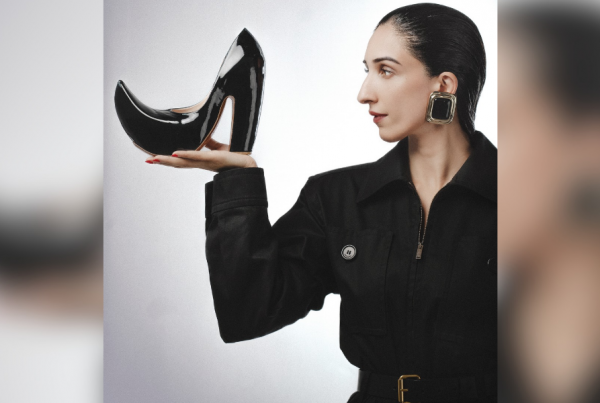“Oh, but so and so sells so much. How can you say she’s not a good designer?†I have repetitively been asked year after year, review after review. It is followed by the inevitable, “Oh you’re so biased!†conclusion. News flash: there are certain qualities that define a good designer and ‘sale reports’ are never on the list!
So what exactly does constitute a good designer? Which are the collections that deserve critical acclaim while others, perhaps better selling ones, are in fact those that just merit an audit by an Income Tax Officer?
As critics, what we look for is something different. That doesn’t necessary mean something ludicrously abstract (re: Ali Xeeshan) but simply something that looks unique while being strong enough to make a mark and begin a trend. Originality is difficult to achieve in fashion because worldwide trends move in cyclical motion, but even a design that reflects an original edit on an established trend is good enough.
A good example would be Kamiar Rokni’s revival of the ajrak print in his NEWS collection. Hardly original as it’s been part of Pakistan’s rustic folklore for eons, the way he reintroduced it into smart, modern clothing was the power that pushed the print. That’s what a great designer can do. Other examples: Deepak’s reinvention of the dastarkhwan in his Milan collection, Sonya Battla’s strong take on Swati embroidery last year, Maheen’s play with phulkaris, Body Focus’ charcoal pop prints in a fusion of east-west silhouettes, Adnan Pardesy’s take on quilting, the list is long.
Even longer is the list of designers that don’t cut the mustard. Why do Nickie Nina, despite having a successfully selling label, seldom impress? Because they still do not have a signature. Out of their entire body of work, their only collection that has recall value is the one shown at PFDC Sunsilk Fashion Week. It was better than what they usually design, but one collection out of the hundreds of commonplace clothes made over the years do not a good designer make. And any impression they made at fashion week was quickly annulled by the Sana Safinaz-inspired Lily of the Valley collection shown last week at the Veet Show.
Why is Maria B never acclaimed as a designer despite having one of the largest networks of boutiques in Pakistan? Because while her last collection (seen again at the Veet Show in Karachi) had fun moments, there was nothing that one hasn’t already seen ad nauseum. Just another regurgitation of kaftans, asymmetrical silhouettes, flared multi-paneled shirts finished with a combination of different prints.
Aeisha Varsey may have a huge set up in Karachi and Khadija Shah of Elan may be the best selling new name in bridal clothing but at the end of the day their collections are industrial, with almost no traces of creative innovation. It is difficult to improvise bridal clothing to begin with but then, that’s why a designer is never judged by the bridals he or she makes. It’s ready to wear and luxury prêt that is the litmus test. And the rare attempts these designers have made to innovate – Varsey’s Working Girl collection or Elan’s prêt line – have not impressed. Shah is fairly new and there is hope she might step out of the bridal bracket but as for Varsey, well, what can I say?
So the first step to being a great designer is having a signature, establishing a trademark that will set your clothes apart and then finding a business strategy that will move those clothes off racks and into wardrobes. Ready to wear has to be in the picture. There isn’t a designer in the world who has built a name and business by studio operations alone. And signatures, good or bad, are established by ‘thinking minds’ that have the technical capability (or training) to construct ideas and translate them into wearable clothing.
Watch any of the following films: Coco Avent Chanel, Valentino the Last Emperor or even Tom Ford’s A Single Man and you’ll understand how three of the world’s most acclaimed designers came to design their signature pieces. It’s a journey they traveled to arrive at a certain style, whether it was a little black dress, a nautical striped jersey t-shirt, a body hugging sheer gown or a razor sharp tweed suit. This is where inspirations, mood boards and the construction of concepts come in.
As Suzy Menkes, one of my favourite fashion journalists says, a critic cannot judge a collection by her or his personal likes or dislikes, that would be crippling the critique. Fashion critique needs to stem from background research and knowledge so you can put things in perspective. It needs to identify clothing in terms of pattern, finish and the overall quality of the garment (break-away embellishment, bleeding colours, snagging hemlines and badly fit clothes are unforgiveable crimes) before establishing the designer’s trademark, if any. Then comes its success and it needs to be evaluated without a bias. It really is very simple.
So the next time someone says, “Oh, but so and so sells so much. How can you say she’s not a good designer?†I will have my answer ready? Playboy is probably one of the most widely circulated magazines in the world but that doesn’t mean it qualifies as one of the best (or maybe it does, depending upon who you ask!). Sex sells, as does bling but style…now that’s another story altogether.













